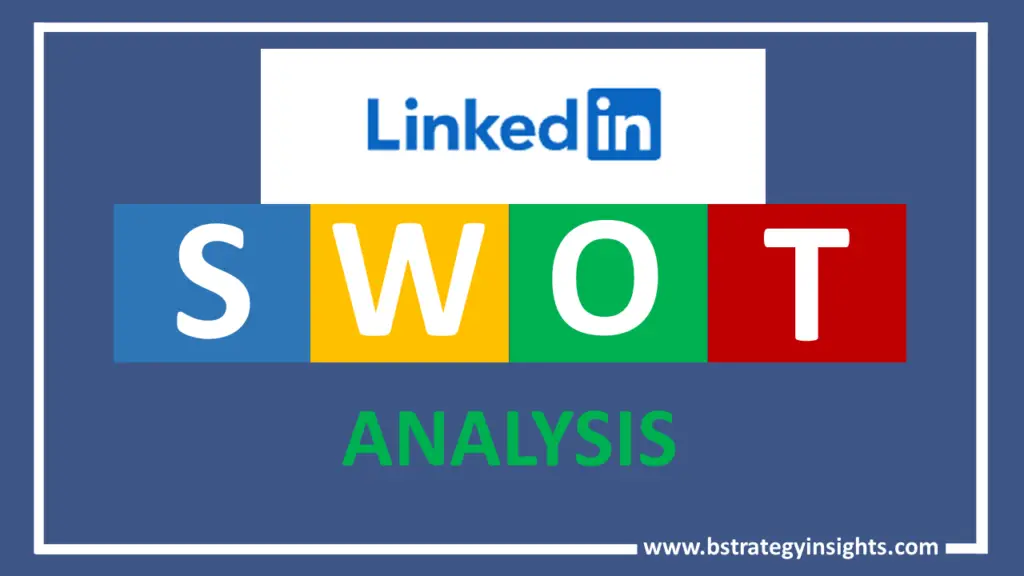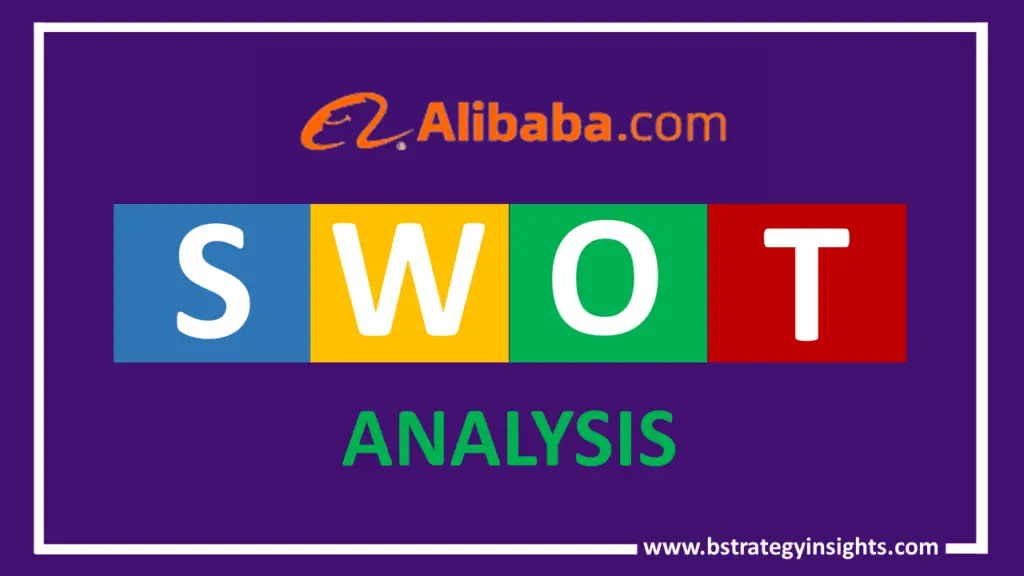
Linkedin is a US-based professional networking site that helps individuals and brands with the search for employment and business opportunities. It was formed in 2003 by Reid Hoffman and later acquired by Microsoft in 2016.
SWOT analysis stands for an analysis of a given company’s strengths, weaknesses, opportunities, and threats for a more strategic progression of the business. Linkedin is a formidable force in the professional networking arena. Therefore, this article is insightful on the factors behind Linkedin’s success, its areas of growth, the opportunities that Linkedin has, and the threats facing the brand.
LinkedIn – At a Glance
| Name | LinkedIn Corporation |
| Website | www.linkedin.com |
| Founders | Reid Hoffman, Konstantin Guericke, Allen Blue, Jean-Luc Vaillant, Eric Ly |
| Chief Executive Officer (C.E.O.) | Ryan Roslansky |
| Headquarters | Sunnyvale, California, United States |
| Type of Corporation | Public |
| Year Founded | 2002 |
| Key Products/Services | free professional social networking site |
| Key Competitors | ZipRecruiter, Indeed.com, Google, Facebook, and Monster. |
Strengths of LinkedIn
Strong Parent Company
Microsoft acquired Linkedin back in 2016. Since then, Linkedin has more than doubled the number of its active users from the point of acquisition. A strong parent company is a great strength for the company.
Linkedin has access to Microsoft’s expertise, financial support, and influence in the technological marketplace. All these are important in LinkedIn’s operations and expansion strategy.
A Huge User Base
As mentioned above, Linkedin has a huge active customer base of more than 774 million users in more than 200 countries. For a professional site to be successful, it needs huge numbers of active users.
This huge customer base brings in network effects that serve to increase the value of the platform and as well encourage many more others to continue joining the platform. Increased active users and customer loyalty ensure longevity, brand equity, and revenues for the company.
Strong Product
Linkedin offers a strong solution to professional needs like search for markets, business opportunities, skills and talents, and employment. It is, therefore, a powerful tool for brand building and promotion and also career development. Individuals and brands have profiles that more or less serve as CVs for both employment opportunities and as well for business opportunities.
The site is trustworthy, giving it more credibility and leverage for business socialization. The solution becomes highly accepted given it addresses the problem of high unemployment rates prevailing globally.
Niche Focus
Linkedin has a particular focus on the professional niche, which is their core business. This allows for little competition for Linkedin as it leverages its expertise in professional networking to stand out from its competitor; it is almost a monopoly in professional networking social sites. With a focus on the niche, Linkedin is able to deliver better customer service that builds customer loyalty and brand equity.
High Profitability
LinkedIn’s ads businesses generated over 3 billion in revenues for the period ending 31st March 2021. This achievement surpassed that of its competitors, who engage in pure advertisement for the business. Competitors like Pinterest and Snap realized $2.8 billion and $1.9 billion, respectively, significantly below what Linkedin achieved.
According to Satya Nadella the CEO of LinkedIn’s parent company, Linkedin realized a 60% year-over-year growth in revenues. The brand has invested in positioning itself as a better choice for business-related ads.
Acquisitions
LinkedIn’s acquisitions of Slideshare, Connectifier, and Lynda have strengthened the brand’s product and service and built its market share. It has increased LinkedIn’s market power by increasing its market share and dominance in the supply chain of professional networks. It has increased economies of scale and scope.
Each of the acquisitions has enriched LinkedIn’s expertise and customer service. In the end, there is more customer satisfaction and brand loyalty.
Weaknesses of LinkedIn
Fake Profiles
Linkedin primarily operates through registered profiles. It, therefore, relies on the information that users feed into its portals and may not have a way of detecting when a malicious individual feeds in wrong data into Linkedin. This leaves other users on the platform vulnerable to malicious people who would take advantage of the innocent participants on the platform.
Privacy Concerns
Back in 2014, Linkedin lost a lawsuit on its advertisement feature ‘invite your e-mails’. In its pleadings, the brand said that it was running the campaign under freedom of speech but the court rejected these pleadings saying that LinkedIn’s acquisition of the emails and then using them without the consent of the owners was a violation of privacy.
Although this occurred in 2014, it has tainted the brand’s reputation and may cause hesitation among potential users whenever privacy is of paramount concern.
Opportunities of LinkedIn
Strategic Partnerships
While Linkedin has close to 800 million users, this number is still small compared to other social networking sites like WhatsApp that boasts more than 2 billion. Linkedin has an opportunity to explore the more than 4.66 billion people that are connected to the internet. The brand could consider partnering with strategic brands like mobile companies. This is because mobile has become ubiquitous and is an enabler for accessing internet connectivity.
Additionally, a huge percentage of those connected to the internet in one way or another would be interested in creating business opportunities or accessing employment opportunities. A little more effort in accessing more people would go a long way in increasing LinkedIn’s customer base.
More Innovation in Features
While the platform is rich in enabling professional networking, there is a need for the platform to continuously innovate its product to ensure it offers more value for its users; particularly businesses and employers. Features like voice and video calls could add more value to the customers’ experiences on the platform.
Global Paradigm Shift to Virtual Working
The business world has been pushed to virtual working spaces. This is a great opportunity for the brand to offer the already present business clients a robust experience of not only hiring or finding a business online but also enabling virtual working through its platform.
More Market penetration
The problem of unemployment is prevalent in almost every country in the world. Linkedin offers great solutions to the challenge of unemployment and low income by matching business needs across the board. Given the needs are the same across the globe; Linkedin has the opportunity to expand to un-entered regions and new markets.
Threats of LinkedIn
Fake Profiles
Fake profiles remain a thorn in the flesh for users on Linkedin. Any encounter with a fake dealer on the platform would leave users shy of using the platform. Linkedin needs to come in with more control measures to secure its platform to protect itself and all its users.
Cyber Security
Given Linkedin is on the cloud, it is potentially exposed to hackers and other cyber threats. There is every need for the platform to be more aware and more armed to prevent any occurrences of hacking that could be costly
Government Regulations
More governments are instituting regulations to guard personal data privacy. Linkedin primarily operates on the premise of personal data being sold to companies to facilitate their recruitment efforts. Laws that increase the protection of personal data remain a threat to LinkedIn’s profitability.
Conclusion
Linkedin is a formidable force in the professional networking space. Additionally, it has significant financial strength from its proceeds and from its parent company to facilitate its expansion strategies. The brand is, therefore, better placed for growth.
It, however, needs to continuously invest in innovation to enrich its product features, eliminate fake accounts and achieve more market penetration.


